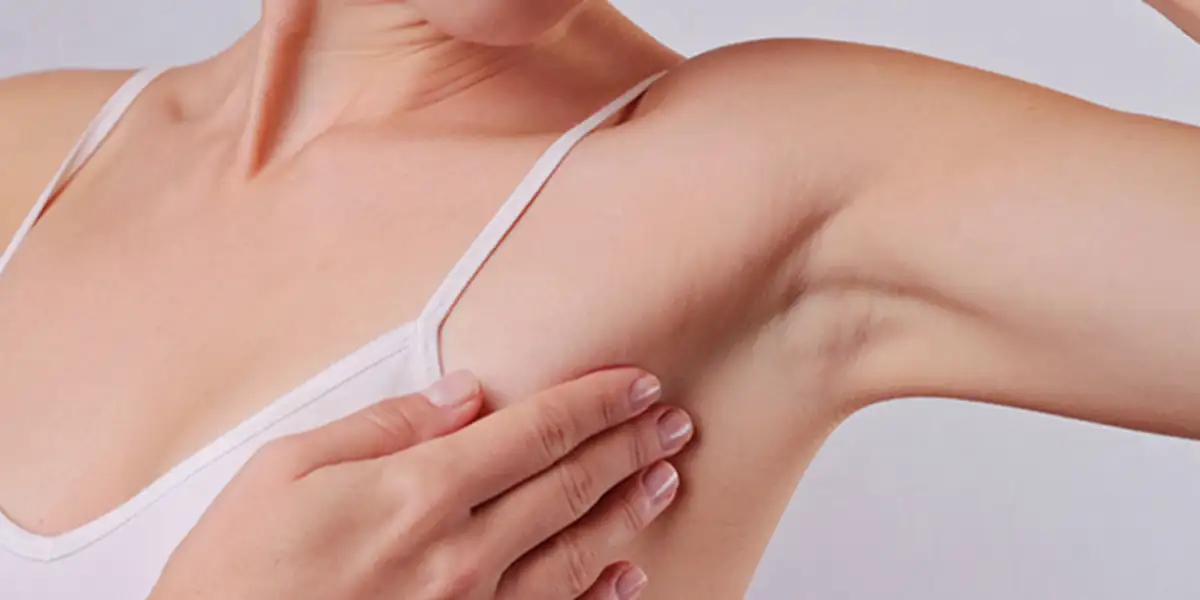Itchy armpits are annoying, and they may also be rather embarrassing! Who wants to be caught scratching their underarms while out for coffee or in the supermarket checkout queue? While a variety of innocuous health issues might create the crawly, unpleasant sensation, there is one dangerous cause that frequently goes unnoticed: breast cancer.
In this article, we will discuss the relationship of itchy armpits and cancer, and provide ways on how you can relieve one at home.
Table of Contents
How is itchiness related to cancer?
Most of the time, itching armpits aren’t a cause for concern. They can, however, be an early warning sign of inflammatory breast cancer (IBC) or lymphoma in rare cases, according to Radha Iyengar, MD, a breast surgeon with Texas Health Breast Specialists and medical director of the Breast Centre at Texas Health Presbyterian Hospital Allen in Allen, TX.
Itchy armpits and inflammatory breast cancer
Inflammatory breast cancer accounts for only 1% to 5% of all breast cancers and is notoriously difficult to detect. The reason is that it rarely causes a breast lump, and the symptoms differ from those of more frequent kinds of breast cancer. This aggressive kind of cancer causes breast inflammation when cancer cells block the lymph veins in the skin, causing redness and swelling.
Beyond that, pitted or thicker “orange peel” skin on the breast, an inverted nipple, a heated breast to the touch, and itchy armpits or breast tissue are other warning indications. “Itchiness associated with redness should be evaluated by a doctor to rule out infection or cancer, especially if it persists despite topical treatment,” says Dr. Iyengar. Your doctor can check your symptoms and, if necessary, schedule a mammography, MRI, or ultrasound.
Itchy armpits and lymphoma
Moreover, lymphoma, like inflammatory breast cancer, can cause symptoms that are easily misdiagnosed as something more benign. This type of cancer begins in the body’s lymphocytes, or white blood cells that fight infection and sickness.
Fever, chills, night sweats, exhaustion, swollen lymph nodes, and itching are some of the symptoms. According to cancer research, itching affects up to 31% of persons with Hodgkin lymphoma. Inflammatory cytokines that irritate nerve endings cause itching.
“If you experience fevers, severe pain in the armpit or other skin changes, you should see a medical professional,” said Dr. Iyengar. If lymphoma is suspected, your doctor may prescribe tests such as blood testing, imaging, a bone marrow biopsy, or a lymph node biopsy.
Itchy armpits and skin infections
Skin infections are another sneaky, but far less deadly, cause of itchy armpits. Sweat combined with skin-on-skin contact around your underarms might promote fungal or bacterial growth.
When some fungi and bacteria proliferate unchecked, they can develop an infection caused by staph or tinea versicolor, according to Jennifer Gordon, MD, a board-certified dermatologist of Westlake Dermatology in Austin, TX, which can cause itching, redness, lumps, or scaliness.
When it comes to staph infections on the skin, the most common culprit is the bacteria strain Staphylococcus aureus. This bacteria can be found on healthy skin. However, if it begins to overgrow, it can create boils, an oozing rash, and redness.
Tinea versicolor, on the other hand, is a common fungal infection caused by an excessive yeast development on the skin. Heat, humidity, and sun exposure can all exacerbate the condition. This infection causes small, circular patches of skin to become lighter (but they may occasionally become darker) than the rest of your skin. They might be white, pink, brown, or yellow in colour, and they can be itchy, dry, or scaly. It is often treated with antifungal drugs, either topical or oral.
How do I prevent itchy armpits at home?
The good news is that those bothersome, everyday itch-triggers may be addressed directly at home, because the solution often boils down to controlling sweat. Here’s what the experts say.
1. Apply antiperspirant before going to bed.
One of the easiest ways to keep itching-inducing sweat in check is with a simple timing tweak: Apply your antiperspirant before you go to sleep instead of in the morning. Dr. Marisa Garshick, Clinical Assistant Professor of Dermatology at Weill Cornell Medicine in New York City, explains that antiperspirants work by sealing sweat ducts in your armpits. Because your sweat glands are more likely to be empty, when you’re at rest, they’ll be able to absorb more of the antiperspirant’s active components that prevent sweat.
And if you’re fresh out of the shower or bath, pat your armpits with a towel before applying your antiperspirant. It works better and causes less irritation if you apply it when your skin is completely dry, Dr. Garshick adds.
2. Use a cool compress.
Do you need immediate relief from itchy armpits? Under your bare arms, use a cool, damp washcloth. According to study published in the Journal of Investigative Dermatology, the cool temperature activates cold-sensing nerves in your skin, temporarily preventing your brain from focusing on that bothersome itch.
Dr. Gordon recommends applying the compress for 10 minutes and using it again if you need more relief. “But they’re designed to work for 24 to 72 hours through moisture,” she says.
3. Or a warm compress.
If your itching armpit discomfort is caused by an ingrown hair, Dr. Gordon recommends using a warm compress rather than a cold one. (Once again, just 10 minutes will suffice.) Moist heat promotes your skin to release the trapped hair, preventing discomfort.
Dr. Gordon also recommends using a body wash containing benzoyl peroxide before shaving to help prevent further itching. The chemical exfoliates dead skin, allowing hairs to grow outward instead of becoming caught and growing within.
4. Apply a natural balm or ointment.
Add a few drops of peppermint essential oil to a dab of ointment such as the Universal Restorative Balm for quick (and long-lasting) itching relief. Then, twice a day, lightly smooth the blend under your arms.
According to a study published in Clinical, Cosmetic, and Investigative Dermatology, this simple method can cut itching in half. The chilly touch of the mint activates nerve fibres and natural opioid receptors, reducing pain sensitivity. Furthermore, natural skincare solutions like the the Universal Restorative Balm slides smoothly, preventing irritation-causing friction
5. Layer your clothing
Staying cold means sweating less, and sweating less can mean less itching. An simple technique to stay cool no matter how hot it gets? Layers of clothing.
This makes it simple to maintain comfort while the temperature swings. Simply remove your cardigan or jumper to reveal a breezy sleeveless top that will not retain heat. Dr. Gordon recommends wearing a sweat-wicking base layer (such as polyester, rayon, or nylon) to move perspiration away from your underarms.

